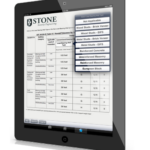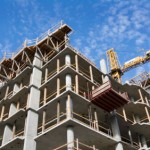The engineers at Stone Security Engineering have more than 50 years of combined experience in protective design projects incorporating blast, ballistics, forced entry, and vehicle ramming resistance requirements. During these years, we have seen what works – and what does not work – when implementing these specialized design requirements in new and existing buildings.
We want to share this knowledge with you.
Our short-course, Protective Knowledge – Blast Resistance By Design, is geared toward professionals involved in all phases of projects and will provide detailed insight into approaches and impacts of protective design.
Have you ever asked yourself:
▪ Do blast resistant doors meet NFPA 101 requirements?
▪ Are blast resistant windows ballistic resistant as well?
▪ Can precast facades meet DoD AT
▪ FP requirements?
▪ Where do I look for subcontractors who can supply and install blast resistant products?
▪ Is there such a thing as ballistic resistant window film?
▪ What in the world is balanced design?
▪ Do I need more than 30m standoff to protect my building?
▪ Are there any mobile device Apps that can help me understand some of the requirements?
We will be answering these questions and many, many more during this course. Click here for more information.
If you have been involved with a project that includes blast loads, you have probably heard of “Balanced Design.” If the  project had more than one blast consultant, you probably heard way more about Balanced Design than you ever wanted to hear. Ever. This is because there is no single approach to incorporating it into a project. So….the million dollar question is: What the heck is Balanced Design?
project had more than one blast consultant, you probably heard way more about Balanced Design than you ever wanted to hear. Ever. This is because there is no single approach to incorporating it into a project. So….the million dollar question is: What the heck is Balanced Design?
Balanced design is a concept commonly used in blast and earthquake engineering that refers to designing supporting elements to the ultimate strength of the supported elements.
The key is to create structural fuses (just like an electrical fuse) designed to be a point of safe failure that will limit damage from a larger than design blast (or earthquake) from cascading to larger and larger areas.
In earthquake engineering, a typical application of this concept is the “strong column/weak beam” concept required in high seismic zones. This requirement was instituted to avoid catastrophic failure by forcing the beam to fail before a column in case of a larger than design seismic load. While there would still be a failure, the result of the failure would be less extensive than if the column failed.
From a blast perspective, balanced design can be applied to both structural and non-structural elements. There are several ways to achieve balanced design, these include:
Balanced Design acknowledges that it is difficult to precisely predict the magnitude of an earthquake or the size of a blast, and it is therefore important to create a controlled failure mechanism to limit the extent of damage.
If you want to learn more about this subject, and many others, join us for our class “Protective Knowledge – Blast Resistance By Design”. Click here for more information.
Sometimes it seems that the world of blast design is a little bit like the wild, wild, west right now. As more organizations,  institutions, and owners have become aware of the need for protecting people and places from explosions, there has been an outpouring of new – and often conflicting – criteria and guideline documents. While this will be a very good thing in the long run, in the short run it can be confusing to the people who are trying to create buildings that mitigate the effects of blasts.
institutions, and owners have become aware of the need for protecting people and places from explosions, there has been an outpouring of new – and often conflicting – criteria and guideline documents. While this will be a very good thing in the long run, in the short run it can be confusing to the people who are trying to create buildings that mitigate the effects of blasts.
One of the areas of confusion is how to designate required glass responses. In this arena, three of the most commoncategorization systems come from the General Services Administration, ASTM F1642-04, and ASCE 59-11. To date the GSA has been the default system used in most design criteria, however the ASTM F1642 is becoming more common and we expect that this will become the default in the not-too-distant future. For instance the UFC 4-010-01 DoD Minimum Antiterrorism Standards For Buildings already references the classification system in the ASTM F1642-04 (note that the 2012 version of the UFC does this directly, while the 2013 version of the UFC references the ASTM F2912, which in turn references the ASTM F1642). This is all to the good, because not only does the industry seem to be converging to an accepted consensus based standard, but the ASTM F1642-04 provides a nicely detailed description of how to evaluate the post-test condition of the window system (i.e. provides dimensions, etc).
In order to help you navigate the different classifications we have created a table showing how the systems correspond to each other – this will be provided to attendees of our Protective Knowledge – Blast Resistance By Design course in May, 2015. Click here for more information on the class